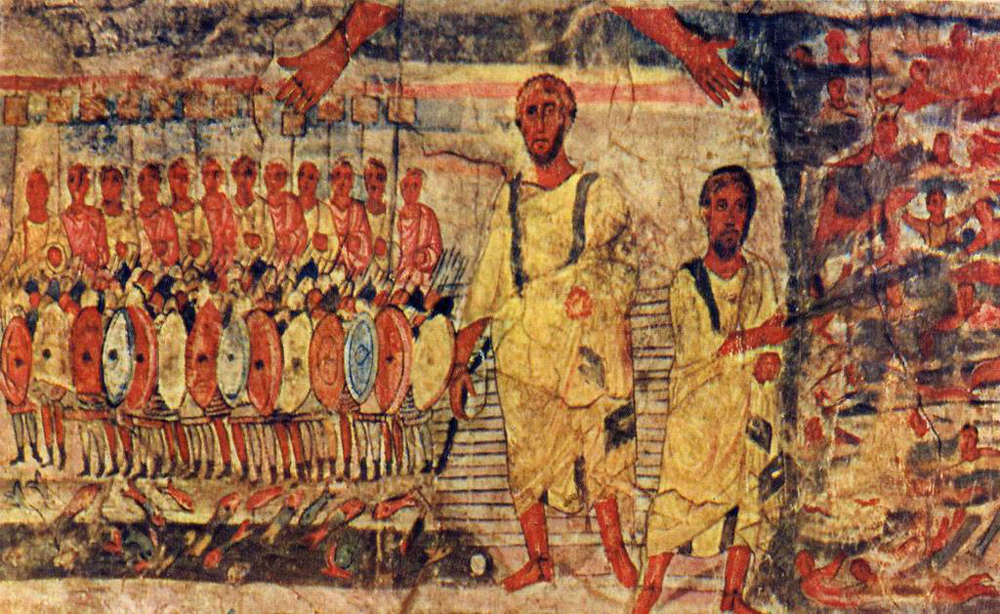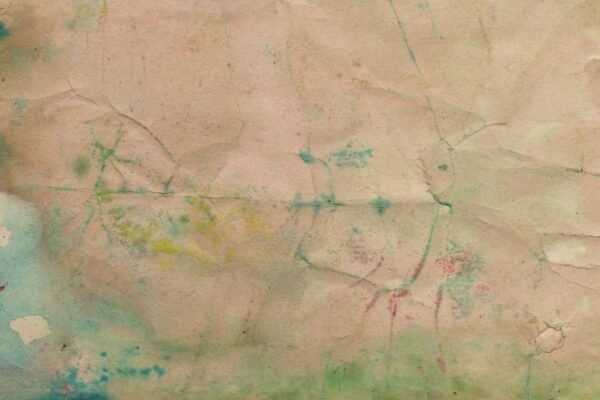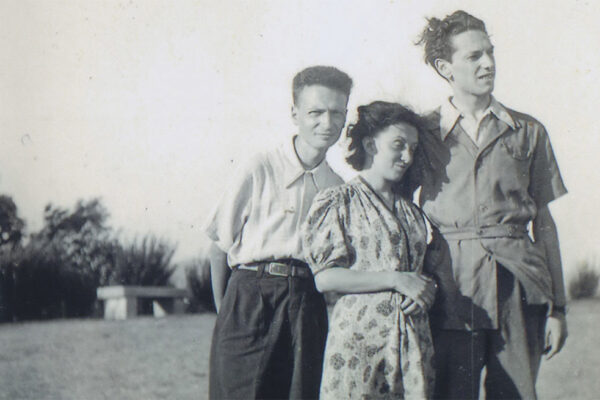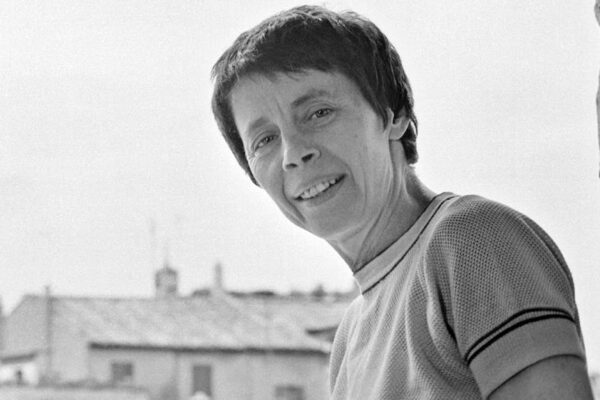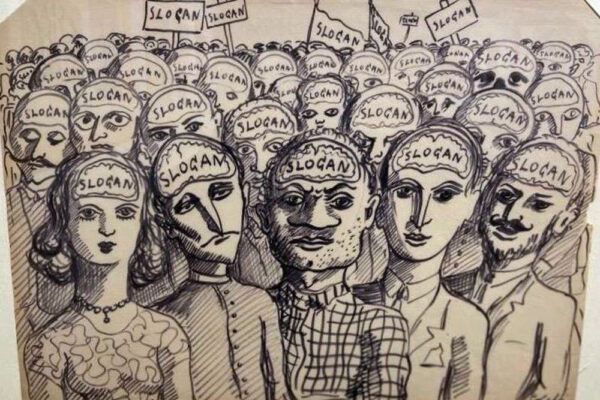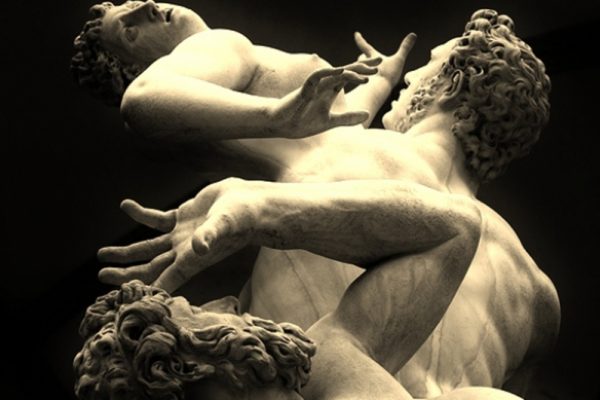Natalie B. Dohrmann and Annette Yoshiko Reed (eds.), Jews, Christians, and the Roman Empire The Poetics of Power in Late Antiquity, University of Pennsylvania Press, 2013
Rethinking Romanness
Annette Yoshiko Reed and Natalie B. Dohrmann
Excerpted with permission of the University of Pennsylvania Press
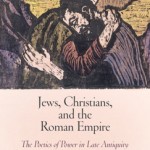 The mound of books on Jewish history containing the hyphenate “Graeco- Roman” in their titles attests a scholarly habit, whereby Hellenistic and Roman empires are often conflated to provide a seemingly stable “pagan” backdrop to the drama of Second Temple Judaism, the origins and spread of Christianity, and the rise of the rabbinic movement in Late Antiquity. Of course, the phrase resonates with elements of ancient experience; one might cite the serial proximity of Ptolemaic, Seleucid, and Roman imperial regimes, the topographical overlay of Roman territory with Greek building styles, the prevalence of Greek as the language of Roman provincial power and law, or the place of Hellenistic paideia in the making of Roman elites. Indeed, seen from some perspectives, Greek knowledge might appear to enliven Roman power, providing the cultural capital, intellectual prestige, or epistemological legitimization for the empire’s military, bureaucratic, and legal mechanisms. Many Jewish and Christian authors seem to suggest as much: in those moments when they did not find themselves face-to-face with Roman soldiers, tax collectors, or tribunals, what they most often contest is not Roman hegemony but rather Greek culture and knowledge.
The mound of books on Jewish history containing the hyphenate “Graeco- Roman” in their titles attests a scholarly habit, whereby Hellenistic and Roman empires are often conflated to provide a seemingly stable “pagan” backdrop to the drama of Second Temple Judaism, the origins and spread of Christianity, and the rise of the rabbinic movement in Late Antiquity. Of course, the phrase resonates with elements of ancient experience; one might cite the serial proximity of Ptolemaic, Seleucid, and Roman imperial regimes, the topographical overlay of Roman territory with Greek building styles, the prevalence of Greek as the language of Roman provincial power and law, or the place of Hellenistic paideia in the making of Roman elites. Indeed, seen from some perspectives, Greek knowledge might appear to enliven Roman power, providing the cultural capital, intellectual prestige, or epistemological legitimization for the empire’s military, bureaucratic, and legal mechanisms. Many Jewish and Christian authors seem to suggest as much: in those moments when they did not find themselves face-to-face with Roman soldiers, tax collectors, or tribunals, what they most often contest is not Roman hegemony but rather Greek culture and knowledge.
It remains, however, that Rome did have culture and knowledge that was not Greek, and its cultural and epistemological imperialism was intimately tied to its political power.
Nor can we imagine an ancient subject who would have perceived Greekness and Romanness as a seamless pair. Rome may have conquered and absorbed Greek territories and entrusted learned Greeks to train its elites, but Latin literature resounds with the ultimate moral superiority of Rome and its disdain for its effete precursor. Already in the first century, Valerius Maximus notes of the Romans who found methods to master both Greek and Greeks: “It was unworthy, they felt, for the weight and authority of empire to be granted to the seductive charm of literature.”
Conversely, as studies on the Second Sophistic have richly shown, ambitious intellectuals could resist Roman power precisely by performing Greekness.
In short, the notion of “Graeco-Roman” would have been a fraught one—to the extent that it existed at all—for a Greek geographer like Strabo, a Roman satirist like Ju- venal, a Jewish historian like Josephus, an Anatolian holy man like Apollonius, or Syrian priests like Iamblichus and Elagabalus.
Nevertheless, it remains common in scholarship on Judaism and Christianity to conflate Roman with Greek. Their blurring is perhaps naturalized by typological habit. As if stumbling into Nebuchadnezzar’s dream, we collapse empire into empire. Such moves, after all, are widespread in our sources, be- ginning with the Hebrew Bible and ranging from apocalyptic traditions of the Qumran sectarians, Jesus movement, and other Second Temple Jews, to the biblical interpretation of rabbis and church fathers. The pervasiveness of the strategy may hint at its effectiveness for consolation or cognitive mastery—as if poetics might rewrite power. Yet the strategy’s persuasiveness also poses a special danger to modern scholars, tempting us to project homogeneity and stasis onto social and political landscapes characterized by instability, particularity, and change.
For those of us who study Jewish and Christian literature, it may be too easy to imagine a world split between “Jew” and “Greek” precisely because so many of our sources divide reality along such lines.
The totalizing rhetoric of “Jew” and “Greek” maps readily onto earlier dichotomies (for example, Israel versus the nations, barbarian versus Greek), and it does important work even in the writings of a Roman citizen like Paul—and even when he is defending his Jewish lineage and Christ belief to a community of Romans.
Even an author with as much firsthand experience of Roman power as Josephus writes his apology for Judaism primarily against “the Greeks.” Something similar appears in Christian apologies ostensibly addressed to Roman rulers, such as those of Justin Martyr, a Samarian émigré to Rome.
The power of the binary “Jew”/“Greek” persists for Syrians like Tatian, Alexandrians like Clement and Origen, and North Africans like Tertullian and Augustine—all living in an increasingly Romanized world.
It was from third-century Carthage, for instance, that Tertullian posed his famous question: “What has Athens to do with Jerusalem?” The question has been quoted and paraphrased by generations of scholars of Christianity and Judaism interested in the encounter of biblical and classical knowledge. Less often noted is the fact that—as Glen Bowersock remarks—“the third-century sophist . . . posed his question about Jerusalem in Rome’s own language.”
Here, as elsewhere, transhistorical and transregional continuities in the Jewish and Christian poetics of difference can distract from the workings of Roman power and its cultural effects, in particular local arenas.
Like the conflation of world empires in our ancient sources, the persistent hyphenate “Graeco-Roman” in modern scholarship can mask both the pre- eminence and the particularity of the Roman Empire. The ubiquity of empire is richly attested in non-Jewish and non-Christian sources, including, but not limited to, documentary and other material data. Yet, as Brent Shaw, Michael Peachin, and others have demonstrated, Roman rule broke from older models of rule, introducing bureaucratic and other innovations that proved inexorably effective but also incommensurate with native systems and notions of power in the eastern Mediterranean and Near East.
The modern scholar trained in Jewish Studies might thus find himself in a position like that of Josephus, who writes of Roman power and politics in relation to war but tackles questions of culture with primary reference to “the Greeks”—finding it easier, perhaps, to engage Apion’s Alexandrian pride than to grapple with the incomprehensible order of Roman political or administrative structures or legal bureaucracy.
Likewise, in modern research on Judaism and Christianity, there has been much attention to moments of clash and conflict between Jews and the Roman Empire, particularly in relation to the first Jewish Revolt and the Bar Kokhba Revolt.
Outside of studies of taxation, however, little has been done to bring the everyday workings of Roman power and culture to bear on ancient Jews and Judaism.
When situating Jews in “Graeco-Roman” cultural context, most modern scholars have largely followed the major preoccupation of our elite literary sources, exploring the challenges posed to biblical wisdom and Jewish piety by Greek paideia. There is no doubt, of course, that Hellenism remained a potent force in Judaism and Christianity long after Alexander, the Ptolemies, and the Seleucids.
By the time of the Roman destruction of the Second Temple, there were already ample strategies for elevating Moses over Homer or Plato— many of which would be repeated for centuries thereafter.
Likewise, the specialist trained in Jewish Studies is hardly at a loss to find accessible studies of Hellenism. Much of the field of Late Antiquity, in fact, has been dedicated to tracing the reception and transformation of a “classical world” imagined fore- most in Greek terms. Studies of the self-presentation of Jews and Christians in relation to Greek culture, language, and knowledge are similarly widespread.
By contrast, questions of Romanness and Romanization prove more difficult to engage, particularly for those scholars of Jewish or Christian literature less accustomed to navigating material and documentary data.
What we would like to suggest here is that much might be gained by at- tending to the nuanced sense of Romanness now emerging among those Classicists and ancient historians who have set aside the traditional focus on wars, resisted the reduction of the effects of colonization to the act of conquest, and grappled anew with the more mundane workings of the Roman Empire in provincial settings.
Pushing past the conflict-of-cultures model, for instance, Greg Woolf has approached Romanization as a set of dynamic local processes, thus attempting to chart the adjustments made—asymmetrically but nevertheless reciprocally—by Rome and provincials. While “it is not to be denied that Roman imperial culture was created in the context of the extension of the domination of one state over its neighbours,” Woolf stresses, “the hegemonic relations created in that process were not equivalent to the subjugation of the culture of one ethnic group or national community to that of another.”
The conventional dichotomy of “Romans” and “natives” thus oversimplifies the process of “the emergence of a new, highly differentiated social formation incorporating a new cultural logic and a new configuration of power,” whereby “all participants acquired new places in the imperial system of differences be- cause that system itself had been transformed.”
As the field of Classics gradually ingests the implausibility of a clean linear imposition of a civilizing Rome on the provinces, it is increasingly making room for the colonized in telling this story of Romanization. With recent interest in Roman provincials, there has also come fresh attention to the potential for Jewish evidence to be used as Roman evidence. Notable, for instance, are David J. Mattingly’s comments on the issue in his 2011 monograph Imperialism, Power, and Identity: Experience in the Roman Empire: “[T]he problem is that we have little extant writing from the Roman world that explicitly explored the feelings of provincials about the process of incorporation into the empire. There is one prime exception to this general rule—the Jews.”
It is perhaps symptomatic of the state of the discussion that Jews make no further appearance in Mattingly’s monograph, even as he questions the rationale for their conventional omission: “While there is substantial ancient and modern literature on their relations with the empire, there is also perhaps a tendency to overstress the atypicality of the Jews. They are seen as something special in the empire, and their voices thus are used to give life to ancient Judaism rather than to form a basis for understanding the experience of other provincials under Roman rule.”
Of course, almost twenty years ago, Fergus Millar articulated the significance of Jewish data for understanding the Roman Near East. Millar’s calls extended the earlier insights of Arnaldo Momigliano and were picked up and extended by historians working across the lines of Classics and Jewish Studies, such as Shaye Cohen, Hannah Cotton, Martin Goodman, Erich Gruen, Tessa Rajak, and Seth Schwartz. Yet, even as individuals have played important roles as interdisciplinary diplomats and dual citizens, much remains to be done to put the fields—as fields—into sustained conversation. Whether the Jews were any more or less typical as Roman provincials than the Gauls, for instance, remains largely unaddressed. In the majority of the field of Classics, interest or knowledge in Hebrew remains as rare as interest or knowledge in Latin among scholars of ancient Judaism.
In perhaps the most notable recent trend in the study of rabbinic literature, however, a growing number of scholars are rethinking themselves also as students of local populations and provincial sub-elites—whether of imperial Rome or Persia.
This reorientation is promising, in our view, not only for opening new avenues for conversation across disciplines but also for framing new questions within them. How did Palestinian rabbis, for instance, figure themselves in a multifaceted and shifting imperial landscape? Did a history of Hellenistic rule and the culture of Hellenism shade their ideas of romanitas? Did Greek attempts to assert cultural continuity and ethnic identity in a Roman world have any impact on Jewish attempts to do the same?
To what degree did Christians appropriate or reconfigure these cultural poetics and strategies of power, drawing upon Jewishness, Greekness, and Romanness?
Table of Contents
List of Abbreviations
Introduction: Rethinking Romanness, Provincializing Christendom
—Annette Yoshiko Reed and Natalie B. Dohrmann
PART I. RABBIS AND OTHER ROMAN SUBELITES
Chapter 1. The Afterlives of the Torah’s Ethnic Language: The Sifra and Clement on Lev 18.1-5
—Beth A. Berkowitz
Chapter 2. The Kingdom of Edessa and the Creation of a Christian Aristocracy
—William Adler
Chapter 3. Law and Imperial Idioms: Rabbinic Legalism in a Roman World
—Natalie B. Dohrmann
Chapter 4. The Law of Moses and the Jews: Rabbis, Ethnic Marking, and Romanization
—Hayim Lapin
PART II. CHRISTIANIZATION AND OTHER MODALITIES OF ROMANIZATION Chapter 5. There Is No Place Like Home: Rabbinic Responses to the Christianization of Palestine —Joshua Levinson Chapter 6. Between Gaza and Minorca: The (Un)Making of Minorities in Late Antiquity —Hagith Sivan Chapter 7. Christian Historiographers’ Reflections on Jewish-Christian Violence in Fifth-Century Alexandria —Oded Irshai Chapter 8. Narrating Salvation: Verbal Sacrifices in Late Antique Liturgical Poetry —Ophir Münz-Manor Chapter 9. Israelite Kingship, Christian Rome, and the Jewish Imperial Imagination: Midrashic Precursors to the Medieval “Throne of Solomon” —Ra’anan Boustan
PART III. CONTINUITY AND RUPTURE
Chapter 10. Chains of Tradition from Avot to the Avodah Piyutim
—Michael D. Swartz
Chapter 11. Change in Continuity in Late Legal Papyri from Palaestina Tertia: Nomos Hellênikos and Ethos Rômaikon
—Hannah M. Cotton
Chapter 12. The Representation of the Temple and Jerusalem in Jewish and Christian Houses of Prayer in the Holy Land in Late Antiquity
—Rina Talgam
Chapter 13. Roman Christianity and the Post-Roman West: The Social Correlates of the Contra Iudaeos Tradition
—Paula Fredriksen
Notes
Select Bibliography of Secondary Sources
List of Contributors
Index
Acknowledgments


